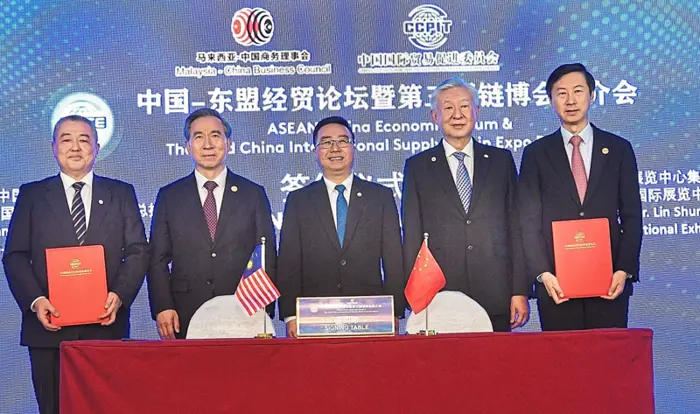
China’s exports and imports both rose more than expected in September, Customs data showed Monday in a positive signal for the world’s second-largest economy, but analysts warned that fundamentals remained weak.
The trade surplus more than doubled year-on-year to $31.0 billion as exports rose 15.3 percent to $213.7 billion, the General Administration of Customs announced, while imports climbed 7.0 percent to $182.7 billion.
The rise in exports accelerated from August’s 9.4 percent growth and was ahead of the median forecast of 12.5 percent in a poll of 15 economists by Dow Jones Newswires.
The survey had predicted a fall of 2.4 percent in imports, matching a surprise decline in August.
The positive figures are the latest contradictory indicator for China’s economy, a key driver of global growth.
Customs spokesman Zheng Yuesheng attributed the improvement to major economies recovering and external demand strengthening.
“The good momentum is expected to continue in the fourth quarter,” he added.
But analysts urged caution.
Julian Evans-Pritchard, China economist with Capital Economics, said that while import growth rebounded, “this should not be taken as a sign that domestic demand growth is turning a corner”.
“The strength seems to have been driven by a surge in imports for processing and re-export,” he added. “As such, it mostly reflects a brighter export outlook rather than a pick-up in domestic demand.”
The improvement was expected to prove short-lived, he said, citing oversupply in the struggling property sector and “subdued commodity demand”.
The expansion in exports was probably linked to the launch of Apple’s iPhone 6, Nomura analysts said in a research note, pointing out that mobile phone shipments rose 47 percent year-on-year, and by $6.7 billion from August.
“External demand faces a high level of uncertainty due to weakening European growth and recent geopolitical risks,” they added, cautioning that underlying domestic demand “remained weak”.
But Barclays was more positive, saying the “big upside surprises” in imports and exports pointed to growth recovering in the fourth quarter.
– Property risks –
Recent reports have suggested expansion in China — which stood at 7.7 percent last year, maintaining its slowest pace in more than a decade — is weakening even after authorities took limited stimulatory measures.
Industrial production growth slowed sharply in August to its lowest level for more than five years, official data showed last month, while house prices have fallen for five consecutive months.
Officials are targeting economic growth of “about 7.5 percent” this year, the same as last year’s objective.
The goal is normally exceeded, but senior officials have repeatedly sought to play down its significance this year.
Last week the World Bank cut its forecast for Chinese growth to 7.4 percent for 2014 and 7.2 percent for 2015. The International Monetary Fund left its predictions unchanged at 7.4 percent and 7.1 percent but warned of “near-term growth risks”, especially in real estate.
Ma Xiaoping, a Beijing-based economist with HSBC, told AFP that property remained “the biggest risk area in terms of internal demand”.
Despite the strong figures Chinese stocks closed down Monday, with the benchmark Shanghai Composite Index slipping 0.36 percent.
September’s trade surplus was lower than August’s record $49.8 billion, and also came in below expectations of $42 billion.
In the third quarter exports rose 12.8 percent year-on-year while imports crept up 0.9 percent, Customs said without giving totals.
For the first three quarters, China recorded a total trade surplus of $231.6 billion, the statement said, up 37.8 percent year-on-year.
Exports climbed 5.1 percent over the nine-month period to $1.7 trillion, while imports rose 1.3 percent to $1.46 trillion.
Trade with the European Union was up 10.2 percent at 2.81 trillion yuan ($460 billion), 14.5 percent of the total, and up 5.2 percent with the US to 2.48 trillion yuan, 12.8 percent of the total.
But bilateral trade with Hong Kong fell 13 percent year-on-year to 1.61 trillion yuan.
With Japan it crept up 0.4 percent to 1.43 trillion yuan.
By Fran Wang
SOURCE: The Edge, 14 October 2014.



